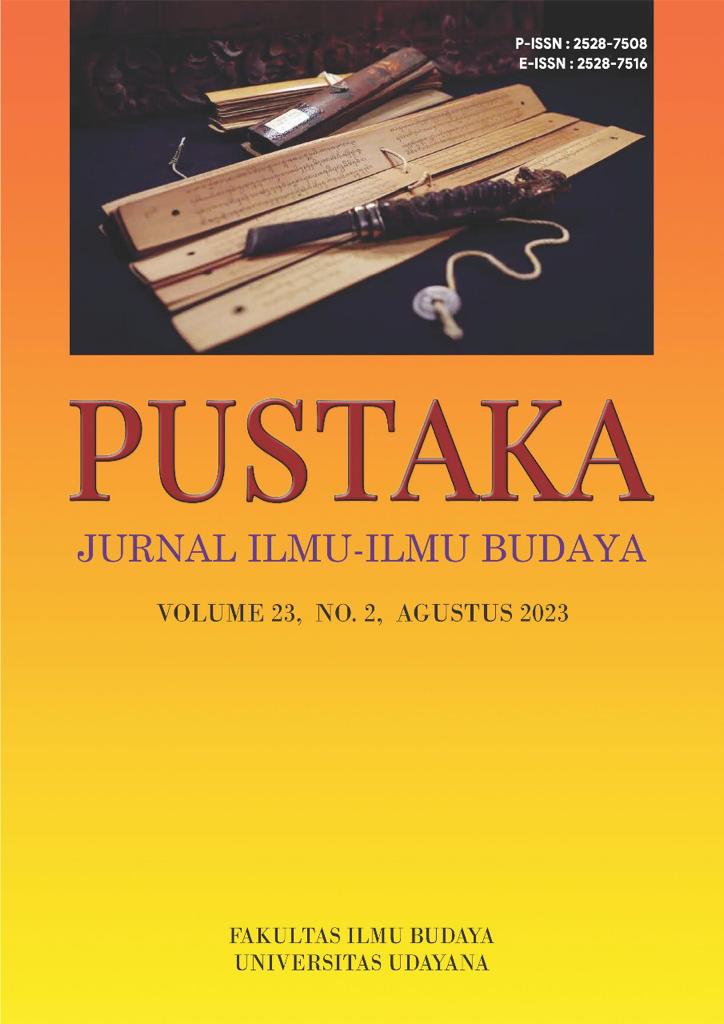Penerapan Metode Drill Dalam Meningkatkan Kanji Pada Siswa LPK Dwipayana Cipta Karya Ubud Tahun Ajaran 2022
Abstract
Teaching Japanese especially in learning kanji is very difficult, so the teacher tries the drill method which aims to make it easy for students to remember kanji letters from how to read kanji and how to write the kanji for each stroke and also to find out the obstacles students experience during the kanji learning process. The method used in learning kanji is the Drill method for three weeks. The subjects in this study were 30 students of LPK Dwipayana Cipta Karya located in Bunutan Village, Ubud. The type of data in this study uses quantitative data which is used in calculating the results of students' kanji answers and qualitative data which will be presented by the results of the questionnaire and combined with the results of interviews with teachers and students. Methods and data research techniques in this study, namely using observation before knowing the weaknesses experienced by students at LPK Dwipayana Cipta Karya, then distributing questionnaires related to starch to students, after that conducting interviews with students and teachers regarding the results obtained from the results of the questionnaire. It can be concluded from the results of the analysis that the drill method is very effective in learning kanji for LPK Dwipayana Cipta Karya students. It can be seen from the fact that there are more students who get vulnerable kanji scores of 70-100 than students who get <70 because after receiving kanji training at LPK and not practicing back independently.
Downloads
References
Arikunto, Suharsimi. (2010). Penelitian Tindakan Kelas. Jakarta: Bumi Aksara.
Bimo Walgito. (2010). Bimbingan dan Konseling Studi Karir. Yogyakarta: Andi.
Catharina. (2006). Psikologi Belajar. Semarang: Universitas. Negeri Semarang Press.
Damayanti, Fitria. (2015). Pengaruh Lingkungan Kerja Terhadap Semangat Kerja Melalui Disiplin Kerja. Jurnal investasi Fakultas Ekonomi Unwir Vol.1,No. 1: 36-53.
Darmawan, D. (2017). Teknologi pendidikan, cetakan ke-3. Bandung: PT Remaja Rosdakarya.
Dimyati., Mudjiono. (2013). Belajar dan Pembelajaran. Jakarta : Rineka Cipta.
Febriani. (2013). Penerapan Model Pembelajaran Kooperatif Tipe Numbered Heads Together (Nht) Pokok Bahasan Bilangan Pecahan Untuk Meningkatkan Hasil Belajar Siswa. Bandung: UPI.
Iskandarwassid, dan H. Dadang Sunendar. (2011). Strategi Pembelajaran Bahasa. Bandung: PT Remaja Rosdakarya.
Mappa, Syamsu. (1994). Teori Belajar Orang Dewasa. Jakarta: Departemen P & K.
Ngalim Purwanto. (2012). Prinsip-Prinsip dan Teknik Evaluasi Pengajaran. Bandung: PT Remaja Rosdakarya.
Richards dan Platt. 1993. Longman dictionary of : language teaching and applied linguistics/ Jack C. Richards, John Platt, Heidi Platt. London : Longman Group
Roestiyah, N.K. (2010). Strategi Belajar Mengajar. Jakarta: Rineka Cipta.
Sardiman. (2006). Penelitian Tindakan Kelas. Jakarta: Bumi Aksara
Sudjana, Nana. 2011. Penilaian Hasil dan Proses Belajar Mengajar. Bandung: Rosda Karya.
Sugiyono. (2005). Memahami Penelitian Kualitatif. Bandung: CV. Alfabeta.
Sugiyono. (2017). Metode Penelitian Kuantitatif, Kualitatif, dan R&D. Bandung: Alfabeta, CV.










